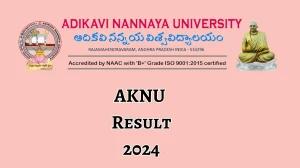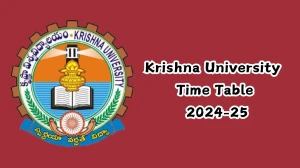KEAM Syllabus 2024 @ cee.kerala.gov.in
CEE, Kerala has published the KEAM 2024 syllabus on its official website, cee.kerala.gov.in, as part of the information brochure. The syllabus for KEAM 2024 outlines topics and sub-topics relevant for exam preparation. Candidates can access the updated KEAM syllabus PDF from this page.
It's crucial for aspirants to utilize the KEAM 2024 syllabus to concentrate on the exam's specific topics and avoid unnecessary study material. The syllabus for KEAM 2024 will cover three subjects: Physics, Chemistry, and Mathematics.
Check - KEAM Syllabus 2024
KEAM Physics Syllabus
|
Subject
|
Units
|
|
Physics
|
-
Atomic Nucleus
-
Waves
-
Dual Nature of Matter and Radiations
-
Physical world and Measurement
-
Kinematics
-
Description of Motion in One Dimension
-
Description of Motion in Two and Three Dimensions
-
Motion of System of Particles and Rigid Body Rotation
-
Gravitation
-
Mechanics of Solids and Fluids
-
Heat and Thermodynamics
-
Oscillations
-
Laws of Motion
-
Electrostatics
-
Current Electricity
-
Magnetic Effect of Current and Magnetism
-
Electromagnetic Induction and Alternating Current
-
Electromagnetic Waves
-
Optics
-
Work, Energy and Power
-
Solids and Semiconductor Devices
-
Principles of Communications
-
PROPERTIES OF BULK MATTER
-
BEHAVIOUR OF PERFECT GAS AND KINETIC THEORY
-
ELECTRONIC DEVICES
|
KEAM Maths Syllabus
|
Units
|
Topics
|
|
Algebra
|
-
Linear Inequations
-
Sequences and Series
-
Complex Numbers
-
Quadratic Equations
-
Sets, Relations And Functions
-
Permutations, Combinations, Binomial Theorem and Mathematical Induction
-
Mathematical Logic and Boolean Algebra
-
Matrices and Determinants
|
|
Trigonometry
|
|
|
Geometry
|
-
Conic sections
-
Three Dimensional Geometry
-
Cartesian System of Rectangular Coordinates
-
Lines and Family of lines
-
Circles and Family of circles
-
Vectors
|
|
Statistics
|
|
|
Calculus
|
|
KEAM Chemistry Syllabus
|
Subject
|
Units
|
|
Chemistry
|
-
SOME BASIC CONCEPTS OF CHEMISTRY
-
STRUCTURE OF ATOM
-
CLASSIFICATION OF ELEMENTS AND PERIODICITY IN PROPERTIES
-
Bonding and Molecular Structure
-
States of Matter – Gaseous state, Liquid state, Solid state
-
Periodic Properties of Elements and Hydrogen – Classification of elements, Hydrogen
-
S-Block Elements and Principles of Metallurgy – Alkali metals, Alkaline earth metals, Principles of metallurgy
-
P-Block Elements – General characteristics of p-block elements, Boron, Silica, Group 18 elements
-
D-Block and F-Block Elements – d-Block elements, f-Block elements: Lanthanides
-
Thermodynamics – System and surrounding, First law of thermodynamics, Second law of thermodynamics
-
Chemical Equilibrium – Physical and chemical equilibria, Equilibria involving chemical systems, Concepts of acids and bases
-
Solutions – Types of solutions, Colligative properties
-
Redox Reactions and Electrochemistry – Oxidation and reduction, Faraday’s laws of electrolysis, Corrosion and its prevention
-
Chemical Kinetics
-
Coordination Compounds and Organometallics
-
Basic Principles, Purification and Characterization of Organic Compounds
-
Hydrocarbons – Classification of hydrocarbons, Alkanes and cycloalkanes, Alkenes and alkynesAromatic hydrocarbons
-
Organic Reaction Mechanism – Electronic displacement in a covalent bond, Common types of organic reactions
-
Stereochemistry – Stereoisomerism
-
Organic Compounds with Functional Groups Containing Halogens – Haloalkanes and haloarenes, Polyhalogen compounds
-
Organic Compounds with Functional Groups Containing Oxygen – Alcohols, Phenols, Ethers, Some commercially important compounds, Aldehydes and ketones, Carboxylic acid
-
Organic Compounds with Functional Groups Containing Nitrogen - Amines
-
Polymers and Biomolecules – Polymers, Biomolecules, Reducing and non-reducing sugars, Polysaccharides, Proteins, Vitamins
-
SURFACE CHEMISTRY
|
KEAM Subjects for Medical
Below is the KEAM syllabus for the medical entrance exam:
| Biology |
-
Diversity in the living world
-
Biology in human welfare
-
Biodiversity and Conservation
-
Physiology of animals
-
Reproduction and development in animals
-
Structural organisation of the body
-
Animal kingdom
-
Genetics
-
Origin and evolution of life
-
Biotechnology
-
Ecology and environment
-
Plant kingdom
-
Reproduction, growth and development
-
Physiology of plants
-
Cell and cell division
|
KEAM 2024 Exam Pattern
|
Particulars
|
Details
|
|
Examination Mode
|
Pen and Paper based test
|
|
Duration
|
Paper I – 2 hour 30 minutes
Paper II – 2 hour 30 minutes
|
|
Medium of Exam
|
English or Kannada
|
|
Section wise Number of Questions
|
|
|
Type of Questions
|
Multiple Choice Questions (Objective)
|
|
Marking Scheme
|
For every correct answer, 4 marks will be provided
|
|
Negative Marking
|
There will be no negative marking
|





